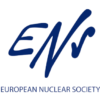EDF Life Cycle Analysis: Nuclear Is A Very Low Carbon Source Of Energy
The recently published EDF Life Cycle Assessment (LCA) “Producing 1 kWh from the French nuclear” confirms the very low carbon nature of nuclear energy.
According to the study, each kilowatt-hour (kWh) of electricity produced by EDF’s reactor fleet in France emits the equivalent of less than 4 grams of carbon dioxide (CO2), precisely 3.7g CO2 equivalent per kWh.
57% of these emissions are represented by the upstream phases of the cycle, while the ‘production’ stage accounts for 28%, the construction for 16%, the exploitation for 9%, and marginally the decommissioning represents only 3%.
The LCA includes data from EDF’s nuclear fleet in 2019, so including the two Fessenheim units, shut down in 2020:
- 34 reactors (900 MW), 22 of which use mixed-oxide (MOX) fuel,
- 20 reactors (1300MW),
- 4 reactors (1450MW).
Moreover, sensitivity studies show that a 60-year reactor operating life reduces the carbon footprint by 8% (3.4g CO2/kWh) compared with a 40-year operating life. EDF (ENS Corporate Member) says that the impact of a 10% change in annual electricity production compared with 2019 is 0.1 g CO2/kWh. So, the company concludes that the overall sensitivity offers a range of 2.9-4.6g CO2 eq/kWh.
Read the full EDF Life Cycle Assessment (LCA) “Producing 1 kWh from the French nuclear” (in French).
A detailed story on EDF LCA in English is available on World Nuclear News.
